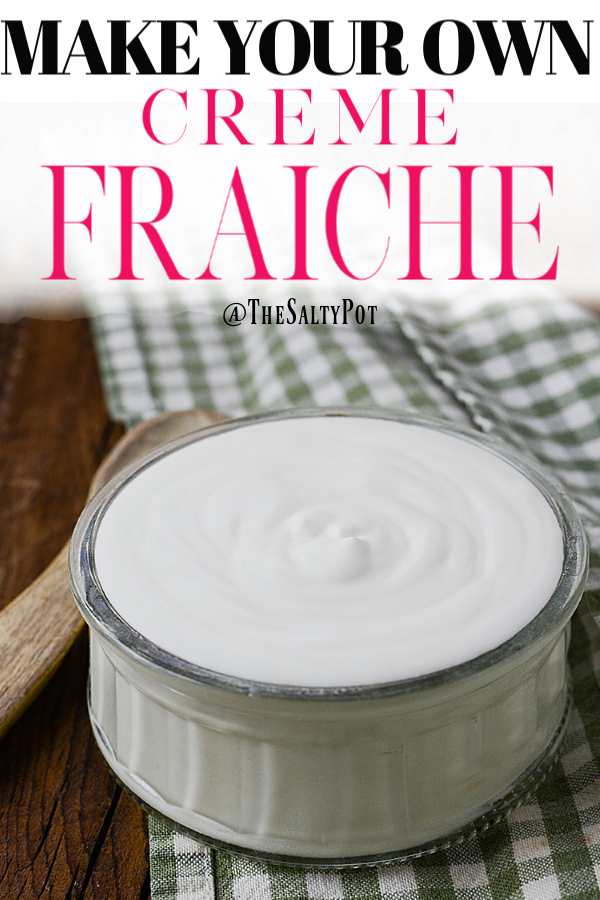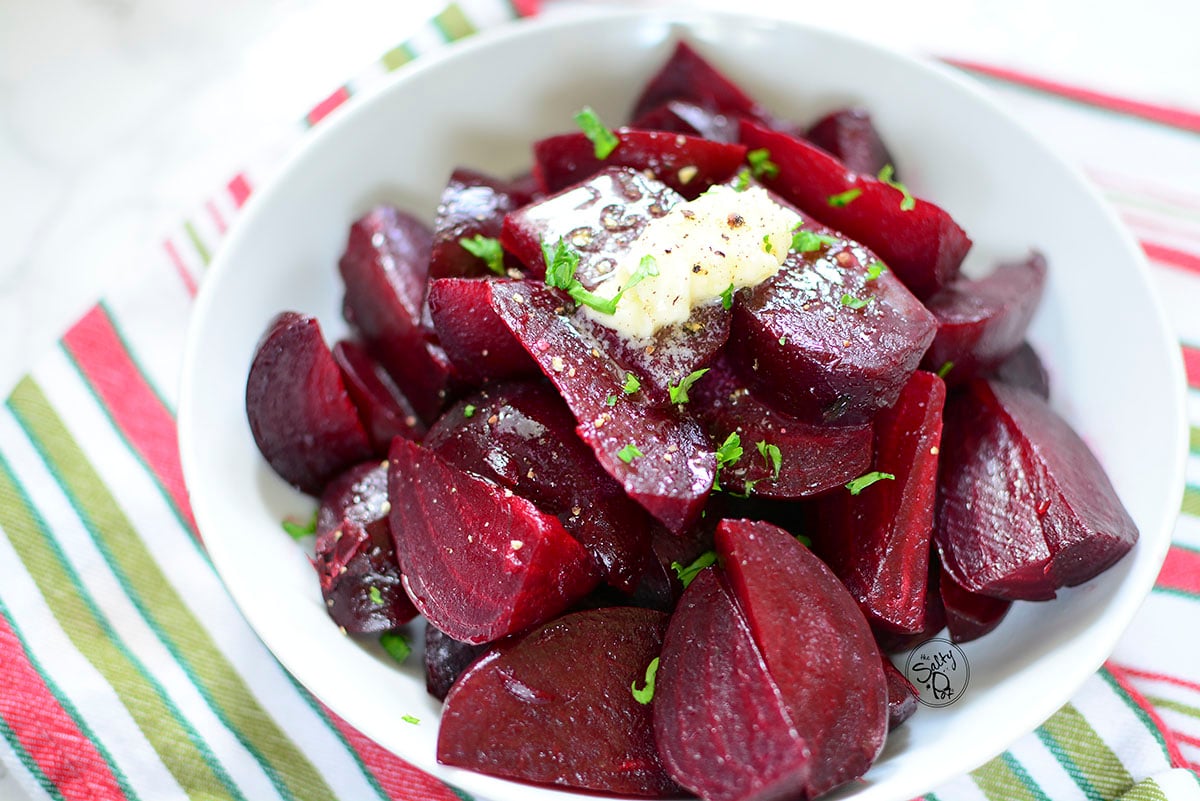How To Make Creme Fraiche
Today, I’ll show you the easiest way how to make creme fraiche. It seriously couldn’t be any easier than it is!
Also, my beautiful reader, if you’ve wondered about the differences between Creme Fraiche versus Sour Cream, I have your answers for that as well.
By the way, as you’ll see, the differences are much more than just cost.
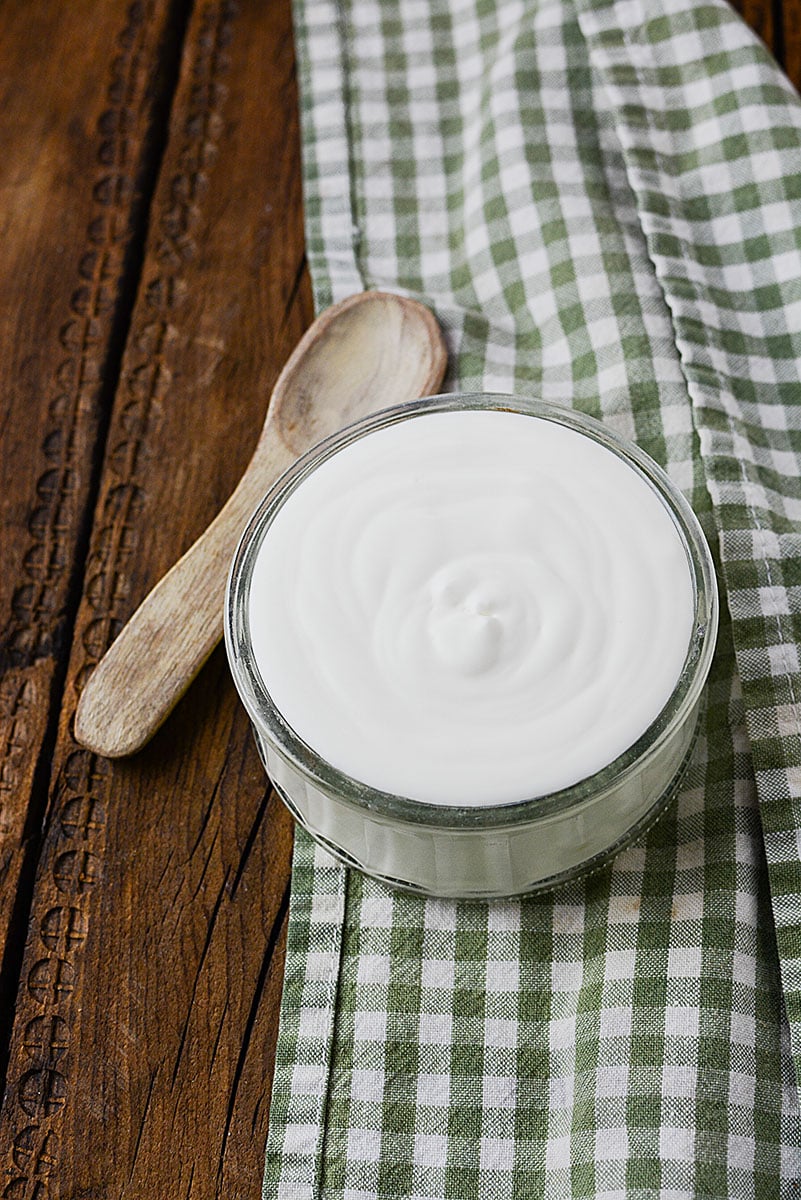
How To Make Creme Fraiche At Home
So how do you get started with it really? All you need is some whole fresh cream. In other terms, this is heavy whipping cream. You’ll also need some cultured buttermilk and a glass jar.
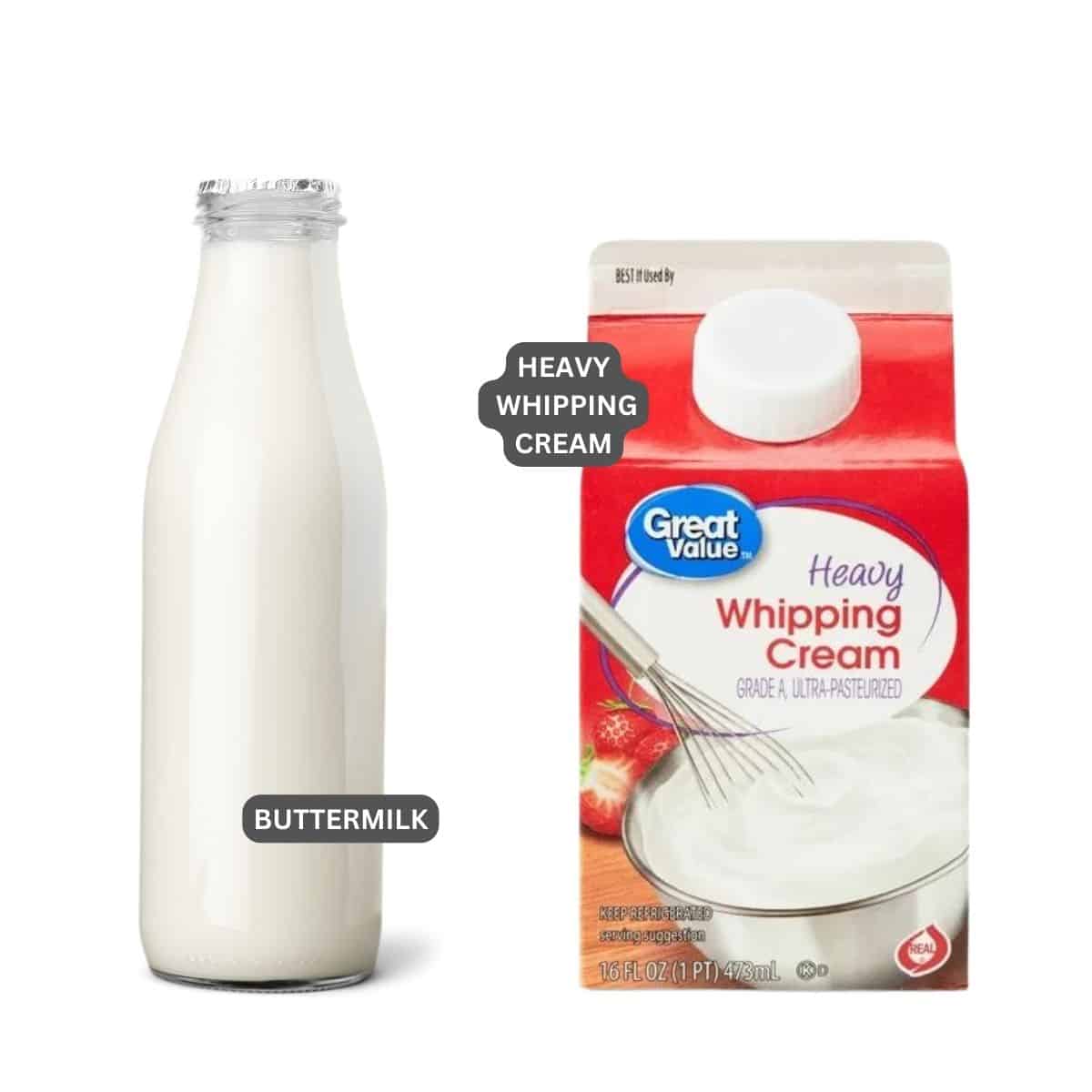
- STEP ONE: Combine the two ingredients in the right proportions (see recipe below), pour the mixture into a glass jar and cover it with a piece of cheesecloth.
- STEP TWO: Let the glass jar stay at room temperature for an entire day or even overnight. After 24 hours, stir the mixture, it should be thicker than when you started!
- If it’s not as thick as you would like, leave it a bit longer.
- STEP THREE: When it’s ready, screw the lid on top and pop it into the refrigerator. Let it refrigerate for at least 24 hours before you use it.
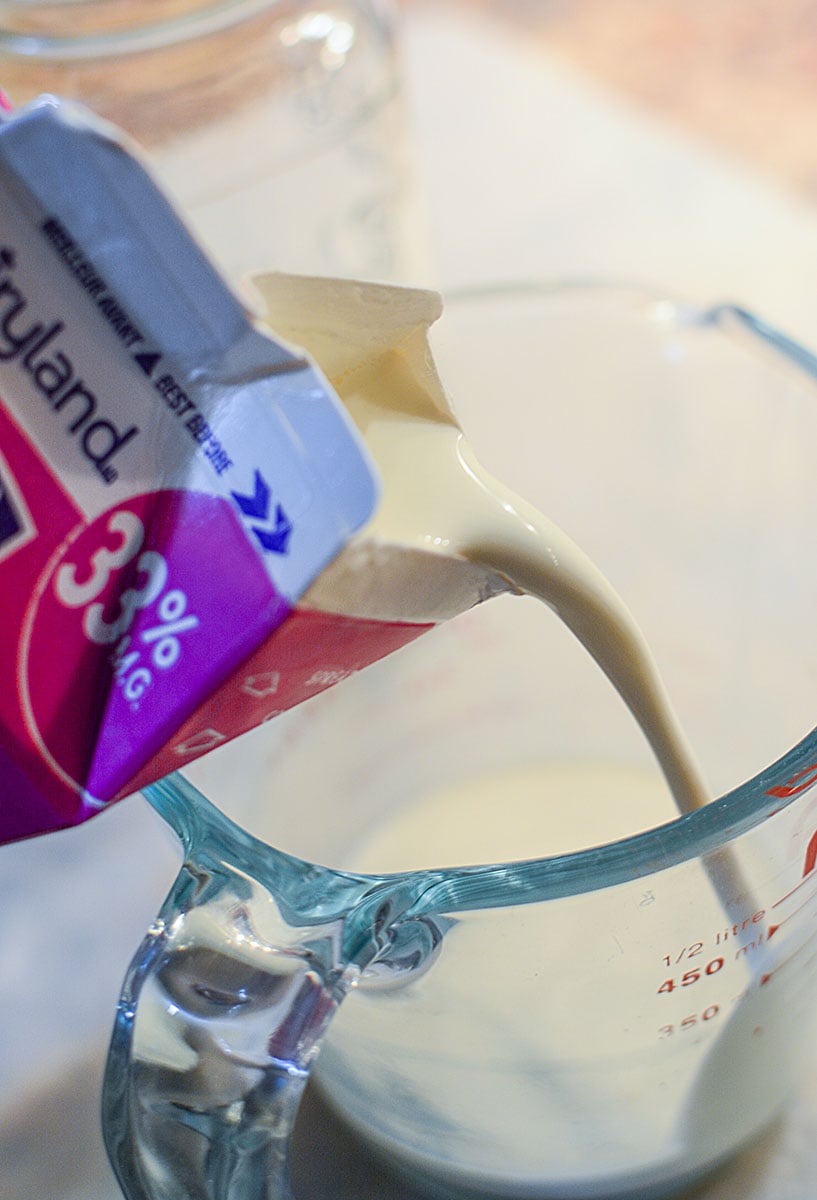
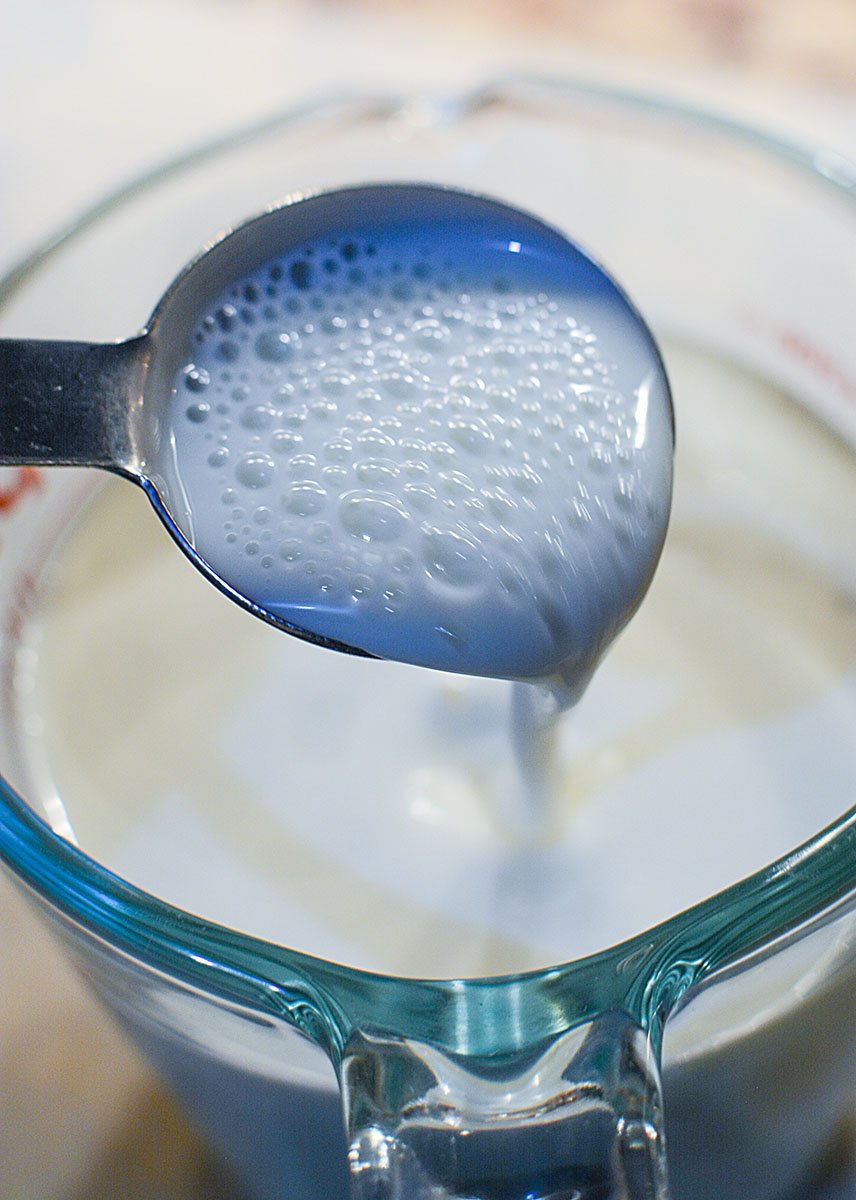
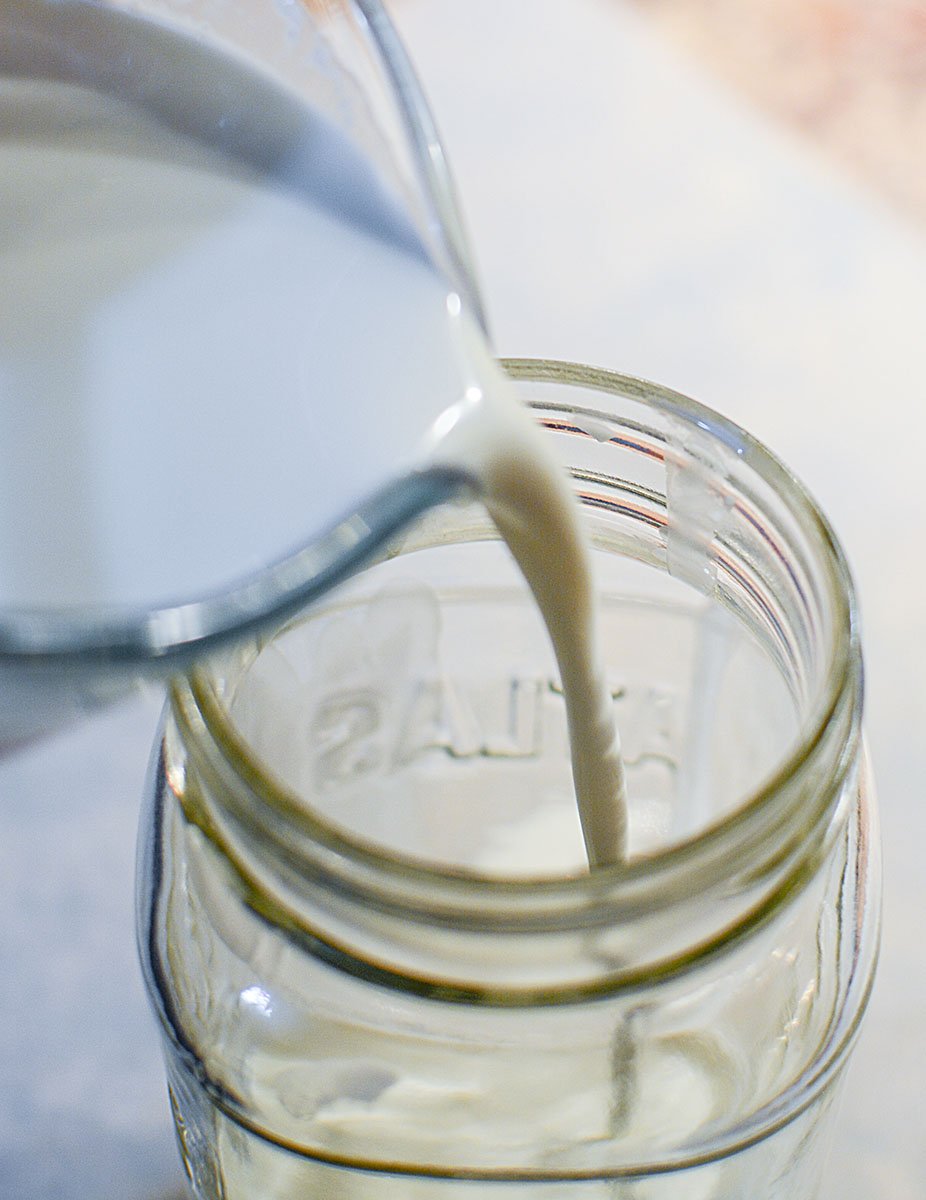
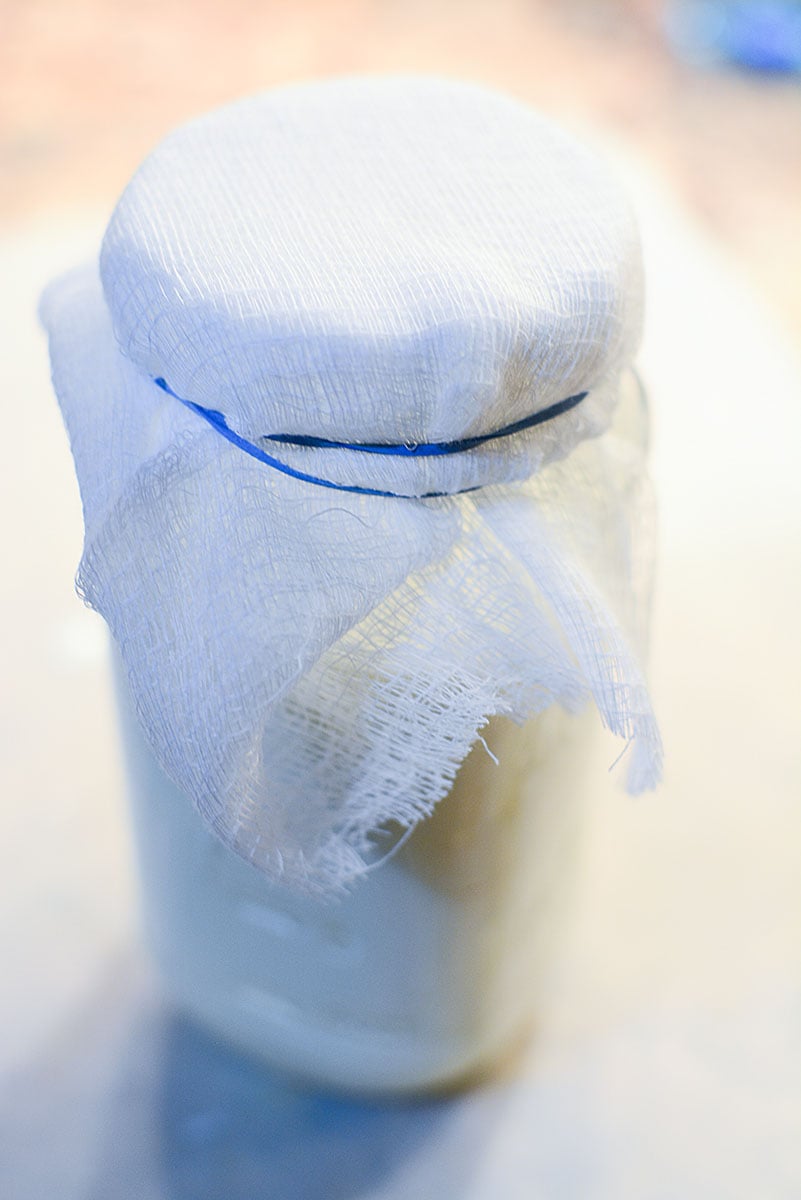
Putting that Decadent Crème Fraîche to Use
And now finally comes the exciting part- putting the actual luscious cream spread you just made to some good use.
- You can create a bowl of herbed crème fraîche by combining some of it with some freshly chopped herbs (think dill, coriander, etc). This can work great as a dip for accompaniments and even on top of roasted veggies like carrots.
- Try topping baked potatoes with the creme fraiche, like these Smoky Bacon Hasselback Potatoes!
- Also, dip your grilled cheese sandwiches into a dollop of creme fraiche, it’s delicious!
- Use crème fraîche as a base for salad dressings.
- Thicken your soups and lend them a nice creamy and delicious flavor by adding some crème fraîche into the mix.
- Looking to take your pasta sauce up a notch? Crème fraîche can do that for you too! Add a dollop or two to fresh pasta with a sprinkle of salt,, YUMMY!
- Adding a tad bit of sugar gives you a slightly sweet/sour flavor with a creamy texture, which makes it a great choice for dessert preparations like these chocolate pots.
- You can also use crème fraîche as a topping on muffins and cakes, or whip up a quick homemade ice cream using it as the base ingredient.
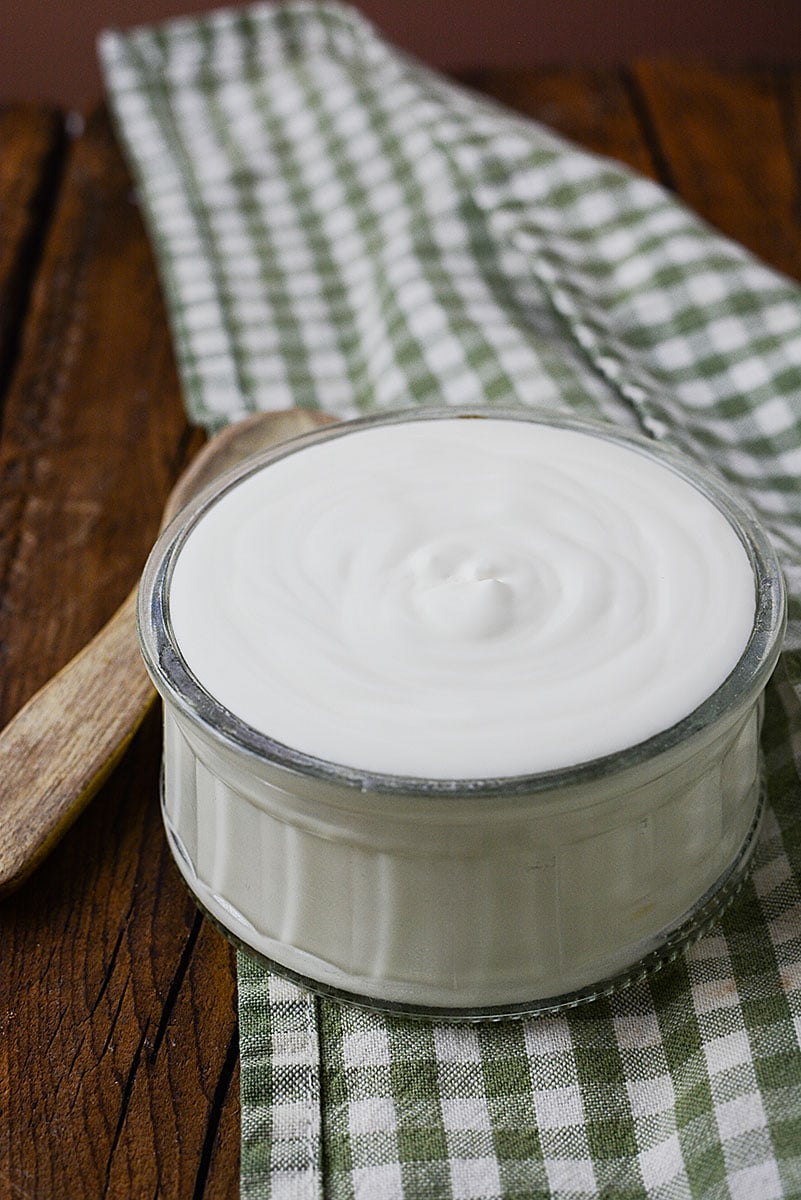
Storing and Freezing Creme Fraiche
Because creme fraiche is somewhat fermented (I know, I know, the term is freaky, but the product is totally fine! The fermentation gives it the tangy flavor), it can last as long as sour cream would last in your fridge.
So, I’d say around two weeks or so if kept in a glass container an airtight lid.
You can freeze it and it will stay good for up to 4 months. The problem comes in when we’re talking about the thawing process. The water may separate from the cream and get all discolored and funky-looking. However, there are ways to bring it back to life, as described in this article from Can You Freeze This.
Can I use Crème Fraîche like Whipped Cream?
Yes, you CAN whip it just like whipped cream! Be sure to use a chilled metal/glass bowl, and chill the creme fraiche before you attempt it. The coolness will help it whip faster, and give you fluffier peaks!
Creme Fraiche VS Sour Cream: What’s the difference?
SIMILARITIES :
- Both products are dairy products
- Both are made from heavy whipping cream
- Each product brings a level of tanginess to recipes.
- They both have a higher fat content than other dairy products
- Used in recipes, they bring a rich, decadent flavor and silky mouth feel to the dishes they’re added to.
- Creame Fraiche and Sour cream are both used in desserts and savory dishes.
DIFFERENCES :
- Fat content: While they both contain higher amounts of fat, Creme Fraiche contains 30% fat, whereas Sour Cream is made up of 20% fat.
- Protein: Sour cream contains more protein than Creme Fraiche because of its fat content.
- Price: Sour cream is usually much cheaper than Creme Fraiche because of the additives and processes both must undergo to become what they are.
- Tang: Sour cream is much tangier than Creme Fraiche.
- Ingredients: Creme Fraiche is cultured using special fermenting bacteria to help give it that characteristic tang. Sour cream, when made in North America, uses a lactic acid culture to give it that tang, as well as Rennin or Gelatin to help give it thickness.
- Uses: Creme Fraiche is usually used in desserts and savory dishes, where sour cream may break and curdle when used in hot dishes.
- Origins: Sour cream was developed in Eastern Europe, whereas Creme Fraiche was developed in France.
What is Cultured Buttermilk?
Cultured buttermilk is regular milk with live bacteria cultures (similar concept as yogurt) and then fermented. The process creates a thicker consistency and a tangy flavor, again, similar to yogurt, but not as thick.
The buttermilk purchased at grocery stores is cultured. This buttermilk shouldn’t be confused with the liquid leftover from when you make your own butter. They are called the same thing, but the leftovers from making butter are thinner and sweeter than cultured buttermilk.
Is Mascarpone the same as Creme Fraiche?
No. Mascarpone is very similar to cream cheese, and its origins come from Italy. It’s similar in the way that both products need bacterial cultures to culture, and they both use whole cream, but the cultures are very different, thus making the flavors very different.
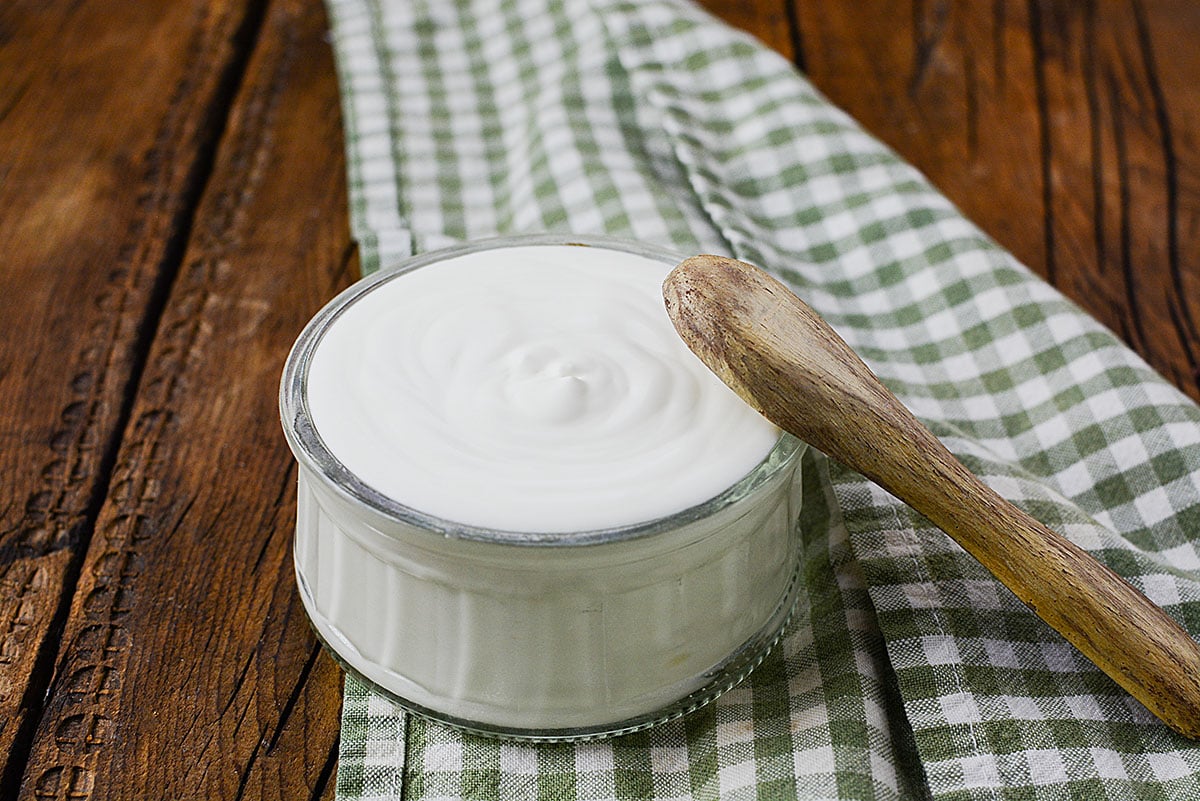
Loved my simple creme fraiche recipe? Don’t forget to share it and spread the love (and yumminess!). Thanks so much for stopping by The Salty Pot today and I hope you have a fantastic day!!
~ Joanne
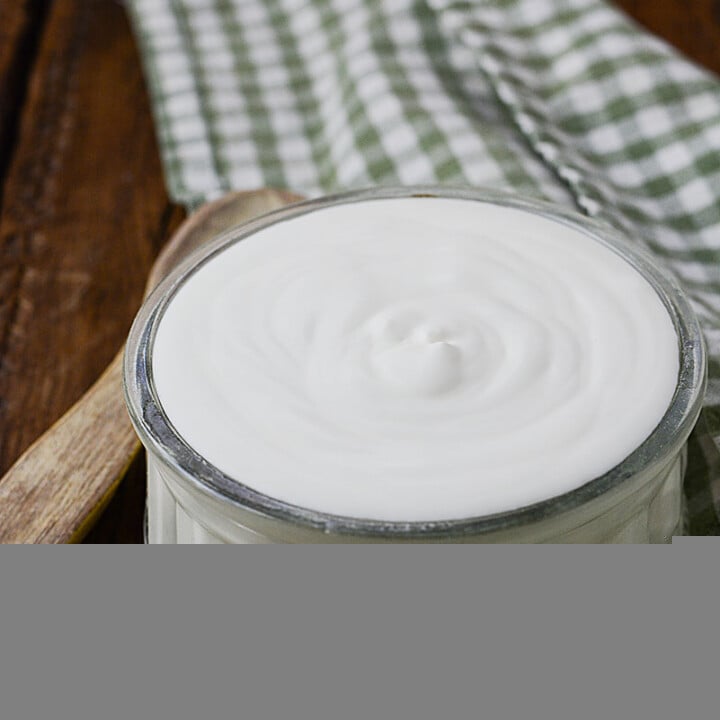
How To Make Creme Fraiche
Creme fraiche is a flavor combination of fresh heavy cream and sour cream, and it's divine in so many recipes!! Try it, you won't be sorry!
Ingredients
- 2 cups of fresh, heavy whipping cream
- 4 tbsp of cultured buttermilk
Instructions
- Place the heavy whipping cream into a glass container or jar big enough to hold over 2 cups of liquid.
- Mix the 4 tbsp of buttermilk into the cream, stirring with a plastic or wood stir stick. Try not to use metal.
- Cover the cream with a loose lid, or preferably, a section of cheesecloth, and bind it with an elastic band.
- Let the mixture sit at room temperature for 24 -48 hours. *see notes
Notes
Do not be alarmed for the cream to sit at room temperature for so long. It will not 'sour' per se, it will culture, and begin to become something a sour cream if that makes any sense. It is a development of fermentation, a bacterial culture that is working on the cream, very similar to probiotics that are healthy for your gut.
You want the creme fraiche to have the consistency of a slightly looser sour cream. Very thick and creamy.
Nutrition Information:
Yield: 16 Serving Size: 1Amount Per Serving: Calories: 103Total Fat: 11gSaturated Fat: 7gTrans Fat: 0gUnsaturated Fat: 3gCholesterol: 34mgSodium: 15mgCarbohydrates: 1gFiber: 0gSugar: 1gProtein: 1g
****DON’T FORGET TO PIN THIS CREME FRAICHE RECIPE TO YOUR FAVORITE PINTEREST BOARD FOR SAFEKEEPING!!****
